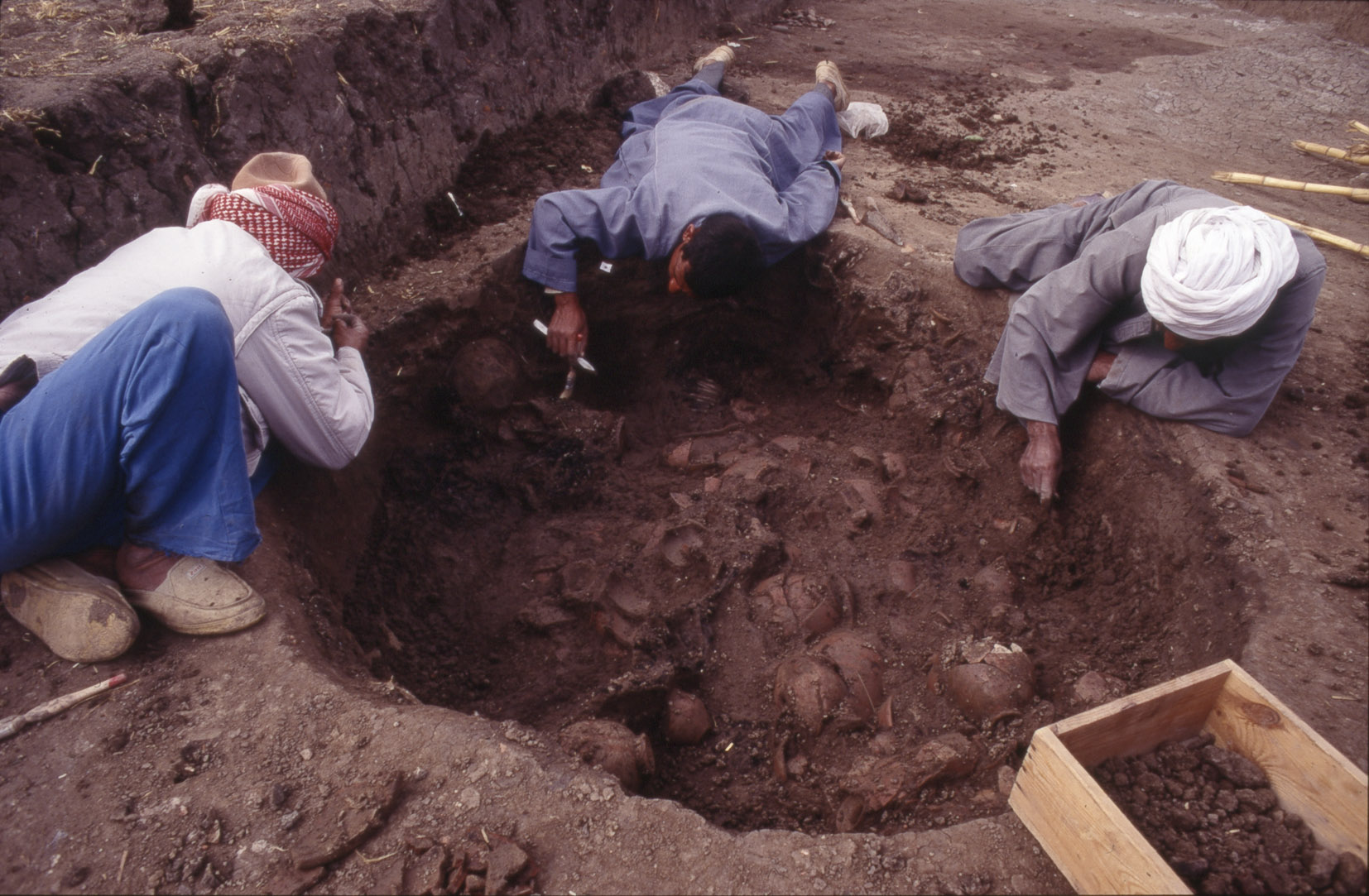Tell el-Dabʿa: sacrificial pit of ʿEzbet Rushdi
A sacrificial pit near the modern village of ʿEzbet Ruschdi, once part of the ancient city of Avaris, contained an unusual mixture of complete animal deposits and a large number of vessels of the kind otherwise found only separately at Tell el-Dabʿa. The composition of the vessel forms has also not been documented in this way before. In a detailed analysis, this pit is placed in the context of Tell el-Dabʿa and the zones of influence involved in Egypt and the Levant.
An offering pit with significantly younger content than the rest of the findings in this area was discovered by Manfred Bietak and Josef Dorner during excavations by the Austrian Archaeological Institute at ʿEzbet Rushdi in 1996. It cuts the reinforced entrance wall of the temple of Ezbet Rushdi built in the second half of the 12th Dynasty (19th century BC). The surrounding area is completely destroyed by modern agricultural activities, so that the original context of this pit can no longer be reconstructed.
The offering pit contained pottery vessels as well as the skeletons of two donkeys that were placed over four sheep. The osteological analyses were carried out shortly after the discovery by Angela von den Driesch (†). This type of deposition is known to occur occasionally in the context of graves at Tell el-Dabʿa from as early as the late 12th Dynasty (late 19th century BC) and certainly originates in the Near East. Animal burials in the context of graves, however, contain significantly less pottery depositions than found in this pit.
Of particular interest is the young date of the pit content, which testifies to the continuation of ritual practices into the New Kingdom at this urban site.
